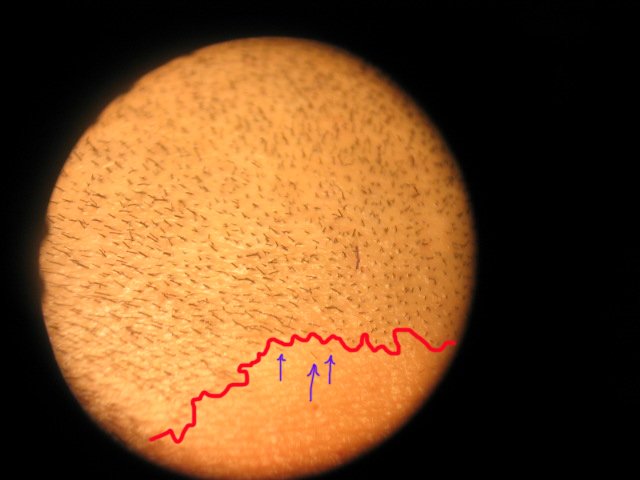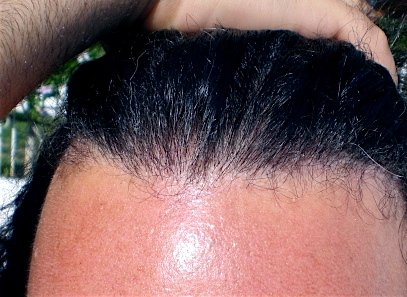Ok I knew there was a language barrier or something. The irregular hairline is important. I agree with you on this and have discussed this before in different threads. But I thought we were talking about just the density part of a transition zone.
A good hairline will have both a transition zone as well as irregularity. A hairline will not be linear, however we still see clinics making a linear hairline.
And who first described irregular hairlines with transition zones is Shapiro and Rose.
Here is my own hairline for your review and below that is the thread I wrote concerning hairlines a while back.
Here is a post by Sofarsogood:
PostPosted: Fri Dec 21, 2007 6:31 pm Post subject: Reply with quote
Maybe there is a communication disconnect here.
A well built “transition zone” to the hairline can make all the difference sometimes in the naturalness of an HT, IMHO.
People with course donor hair and high skin-to-hair contrast often have an abrupt looking HT hairline, IMO.
In my case, FUs (even some singles) looked abrupt., IMO
BHT was used to create that “soft-zone” or “transition zone” and 3-peaks.
IMHO, it made a big difference in the naturalness of my HT.
If one isn’t comfortabe with BHT, perhaps nape hair could achieve the same effect.
The “soft-zone” only should be 2-3 mm tops otherwise the “unnatural” look may occur as the good doc suggested.
If we posted extreme close-ups of natural hairlines, I believe we would all see the value of the “transition zone”.
Check it out what BHT did to my HT hairline…

Here is a post by the BSPOT:
PostPosted: Sat Dec 22, 2007 2:49 am Post subject:
There is always a transition zone in every hairline.
It is paramount to achieving natural hairlines.
People often mistake “soft or natural” hairlines with low density which is untrue.
The idea or theory may have existed before Dr. Shapiro, but he wrote it, named it, and then perfected it-- it exists.
Take Care,
Jason
Here is a post by the hairloss cure:
PostPosted: Mon Dec 24, 2007 1:54 am Post subject: Reply with quote
Just to be clear, I wrote the following in my initial post: “Even people with luscious heads of hair will have a zone, even if it is only a few mm deep, where the leading edge is thinner, irregular, and undulating.”
“Thinner” refers to the use of exclusively single hair units. “Irregular and undulating” refers to many things, including irregular peaks.
I thought the statement was fair and rather inclusive. Furthermore, I believe it nicely describes many of the hairlines in the photos above.
Rose Hair Restoration




